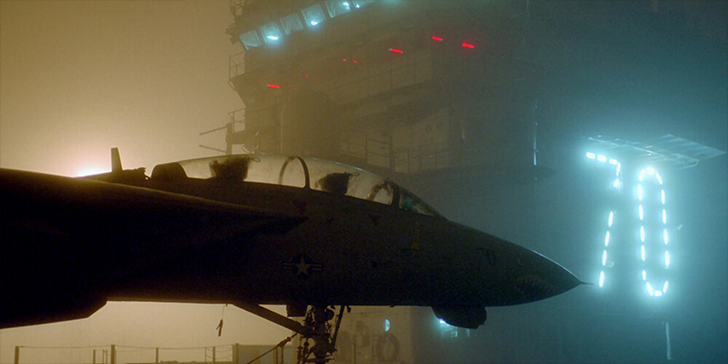 On September 30 through October 1, I attended the SAE A20 Aircraft Lighting Steering Committee’s fall meeting in Salt Lake City, Utah. The committee consists of representatives from lighting manufacturers, aircraft manufacturers, the Federal Aviation Administration (FAA), SAE, and aerospace lighting consultants. These meetings offer an excellent opportunity to have open dialog and discussion about new technologies and existing requirements and standards. In this article, I’ll share a couple highlights from the meeting and six recent standards that were revised and approved by the committee.
On September 30 through October 1, I attended the SAE A20 Aircraft Lighting Steering Committee’s fall meeting in Salt Lake City, Utah. The committee consists of representatives from lighting manufacturers, aircraft manufacturers, the Federal Aviation Administration (FAA), SAE, and aerospace lighting consultants. These meetings offer an excellent opportunity to have open dialog and discussion about new technologies and existing requirements and standards. In this article, I’ll share a couple highlights from the meeting and six recent standards that were revised and approved by the committee.
SWIR Technology Research and Advancements
Regarding new technologies, Tim Robinson, Research and Technology Manager at Korry Electronics, Inc., gave a presentation to the group that shared recent advances in short wave infrared (SWIR) digital imaging systems that demonstrate progress towards commercial viability.
He discussed the results of a three year investigation that was conducted by Korry Electronics, Inc. and Hoffman Engineering that was sponsored by the Air Force Research Laboratory. Their research defined a model that establishes cockpit lighting SWIR radiance limits, discussed tools to measure SWIR digital imaging system performance, and shared the actual performance of the system. This study demonstrates the steps and research that the U.S. military takes to identify new technologies that enable our military to stay competitive.
It should be noted that SWIR technology is different than enhanced flight vision systems (EFVS) or night vision googles (NVGs). SWIR technology operates in the 900 - 1700 nm wavelength region. All three technologies enhance a pilot’s ability to fly aircraft during nighttime operations and in poor visibility conditions but SWIR digital imaging systems have better sensing capabilities. SWIR technology allows pilots to operate around the clock in diverse and challenging operating conditions. In particular, SWIR is able to penetrate fog, haze, and smoke.
While the resolution, sensitivity, and refresh rate of SWIR digital imaging systems is improving, it is not yet on par with what NVGs provide. Even though the use of SWIRs may still be a few years away, the SAE A20 committee has already begun to discuss what needs to be taken into consideration to ensure that this technology is successfully adopted into the cockpit. For instance, compatibility issues come into play as it relates to current NVG use and heads-up displays (HUDs). Current night vision systems which filter out energy at different wavelength ranges will most likely need to be updated so they are compatible with SWIR technology. This subject is something that night vision lighting companies will want to get ahead of; we will continue to monitor this technology and keep you abreast of any advances or document revisions.
Rise of the Drones
The availability and use of unmanned aircraft systems (UAS), also commonly known as drones, continues to grow; the FAA has projected that up to one million UAS could be sold during the upcoming holiday season. How they will integrate into the airspace is unknown and the FAA is still developing regulations to ensure the public’s safety.
In response to the growing usage of UAS, last spring the SAE A20 lighting committee began to create a document that provides recommendations on how to appropriately light UAS, named “ARP6336 Lighting Applications for Unmanned Aircraft Systems.” Since then, committee members have created draft documentation; it is expected that an update to the draft will be presented at the March 2016 meeting.
There is some urgency to complete this document as drone usage grows. At the meeting, it was shared that there were 30 to 40 documented cases of near misses at several heavy traffic airports. In addition to risks around airports, UAS are being used in a growing number of commercial applications for the agriculture, forestry, power generation, and mining industries. Manufacturers of UAS and commercial users are looking for guidance to ensure that UAS can be safely operated; proper lighting will ensure their visibility to pilots in the airspace. The following links share information on current recommendations, new UAS applications, and the challenges and risks that users are encountering.
- Unmanned aircraft are taking off
- Irresponsible drone use is on the rise, says FAA
- US drone rules hamper firms hoping machines can take over dangerous jobs
- Droning on for science
Document Review and Revision Status: 6 Documents Approved by Committee
Over the course of the meeting, the group discussed more than 20 documents that were ready for review, currently being revised, out to ballot, or were in the process of being approved by the SAE Aerospace Council. Before a standard or document goes into effect it must first be voted and approved by the committee and then it receives final approval by the SAE Aerospace Council. Below is a list of the four standards that have been approved by the committee and are currently being reviewed by the SAE Aerospace Council:
- ARP5825 Design Requirements and Test Procedures for Dual Mode Exterior Lights
- ARP6402 LED Landing, Taxiing, Runway Turnoff, and Recognition Lights
- ARP503 Emergency Evacuation Illumination
- AIR5689 Light Transmitting Covers for Exterior Aircraft Lighting
Since the SAE A20 spring meeting, two standards have been fully approved and published, including:
ARP 694 Aerial Refueling Lights - Design Criteria
This SAE aerospace recommended practice (ARP) is intended to cover all external lights on tanker and fixed wing receiver airplanes that are used for aerial refueling. The document describes lights used for two basic types of aerial refueling: the probe and drogue method and the boom/receptacle method.
Revision Rationale: This ARP was revised to update and improve specification of technical requirements. References to older lighting technologies have been updated to include newer technologies, such as LEDs. References to covert lighting have also been added.
ARP5873 LED Passenger Reading Light Assembly
This document presents minimum criteria for the design and installation of LED passenger reading light assemblies in commercial aircraft.
Revision Rationale: The uniform pattern of the LED reading light has been changed to a 267 mm radius to reduce spill lighting into adjacent seat areas.
If you are interested in learning more about the committee or if you’d like to join us at the next meeting, visit the SAE A20 Lighting Steering Committee’s website. The next committee meeting will occur in the spring, March 23-24, in Fort Lauderdale, FL. To register on the website, you will need to use your SAE membership user ID and password. If you’re not a member, you can contact Maureen Lemankiewicz to register. More information on the spring meeting can be found here.
Learn more about how we serve the aerospace industry here.
Photo credit: Featured image by U.S. Navy photo by Photographer's Mate 3rd Class Martin S. Fuentes. [Public domain], via Wikimedia Commons

